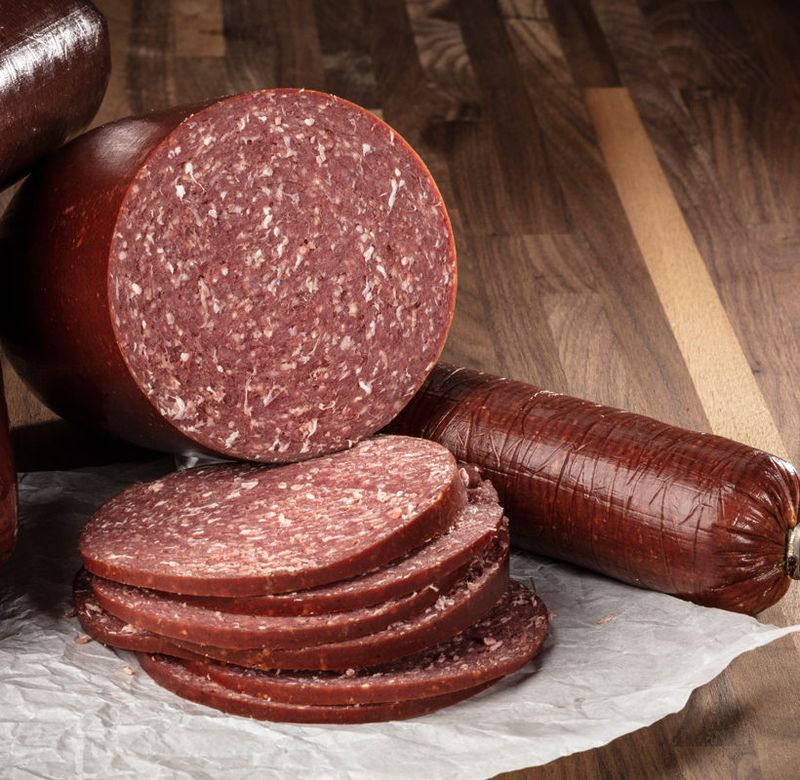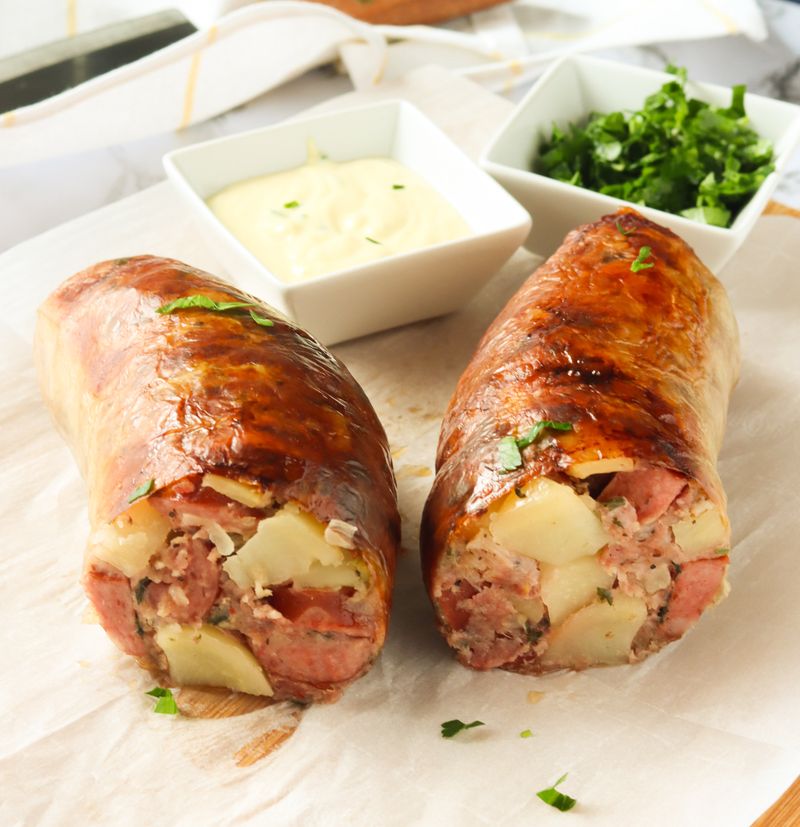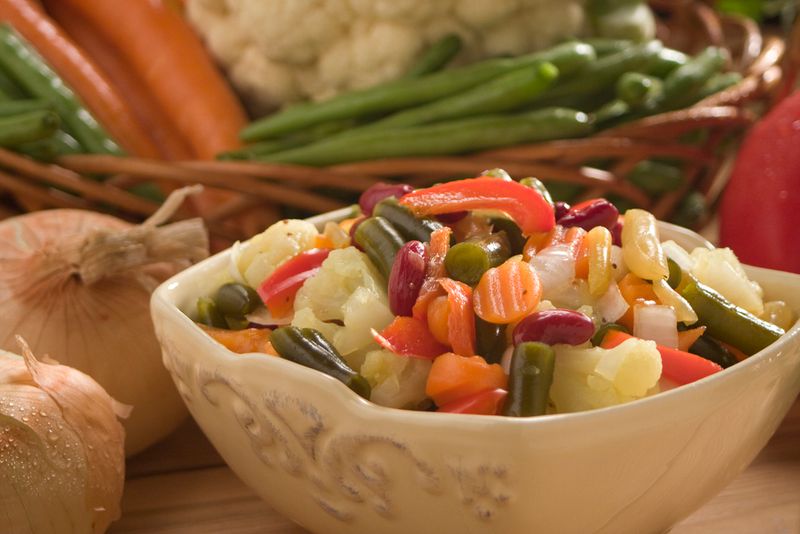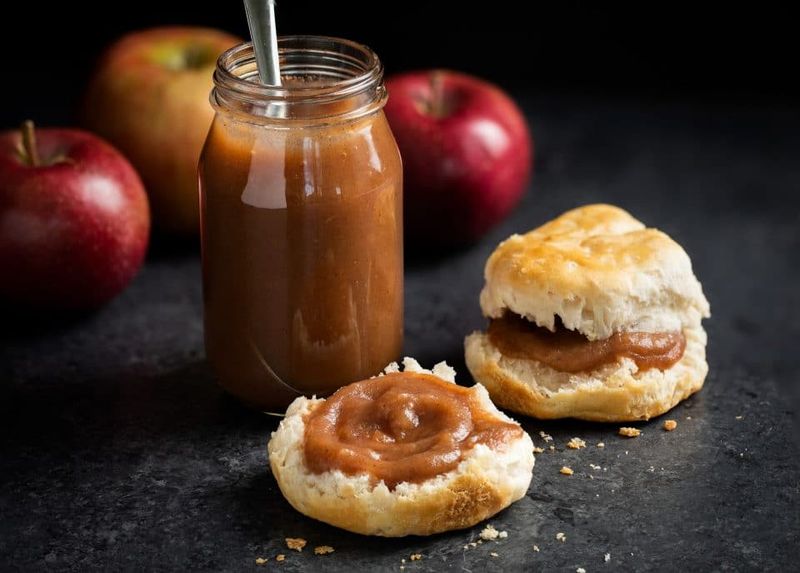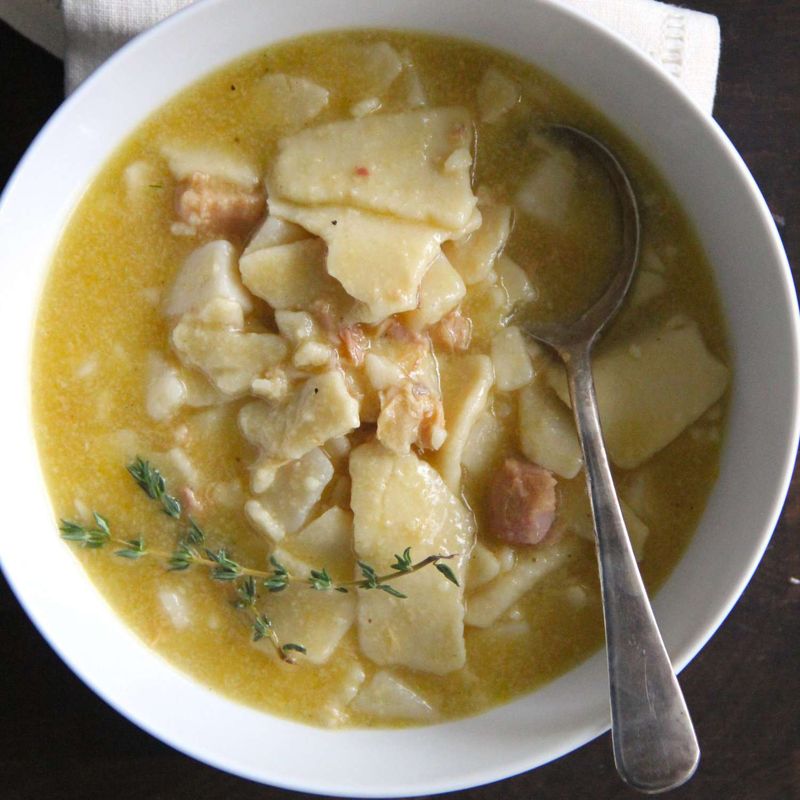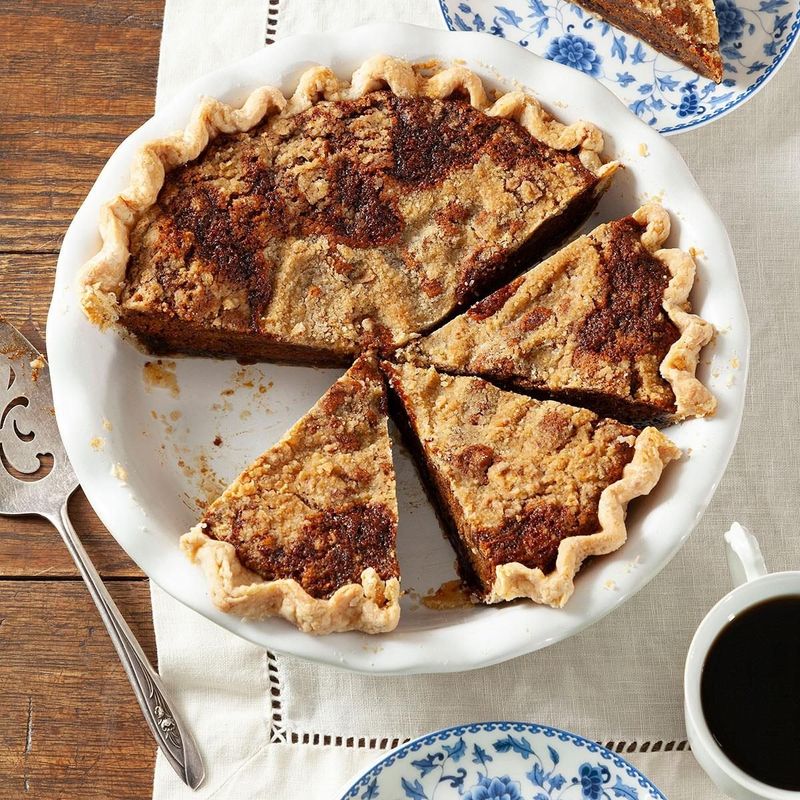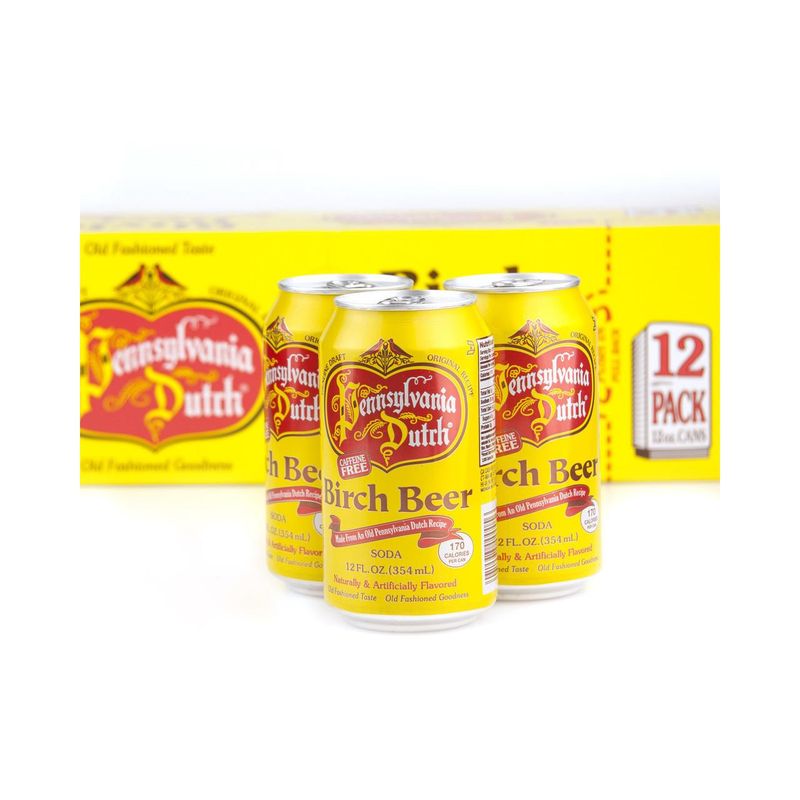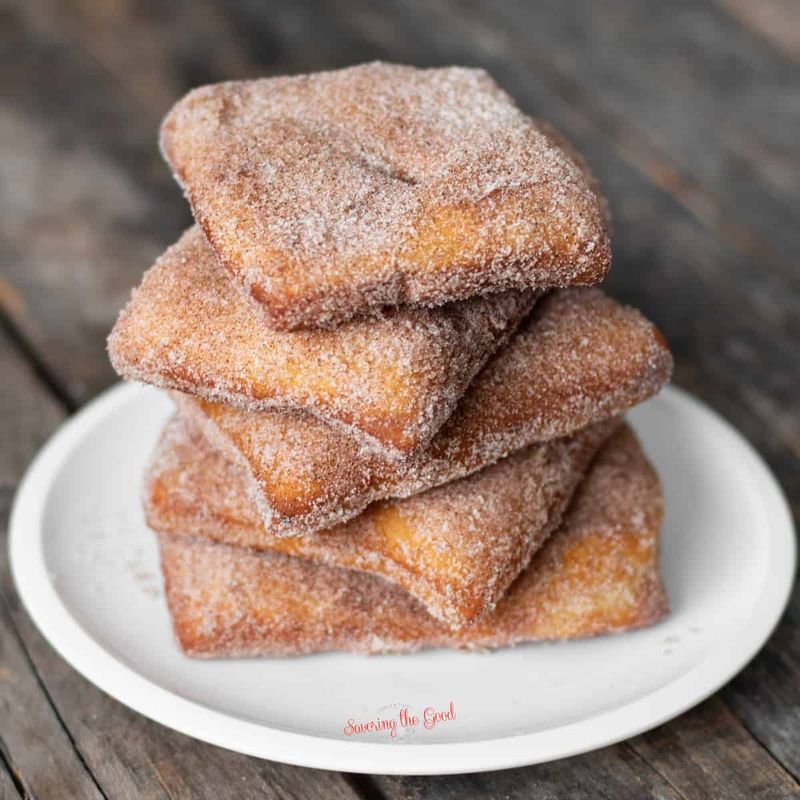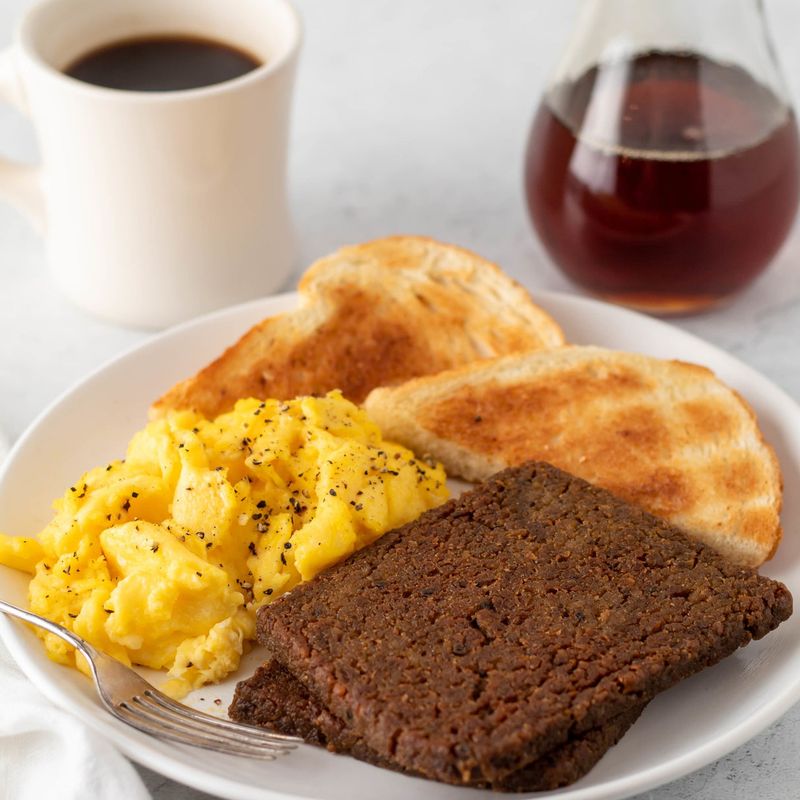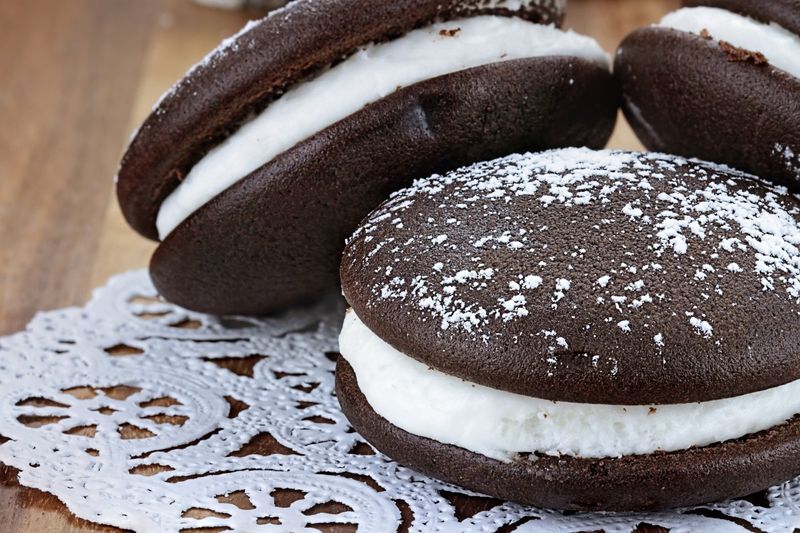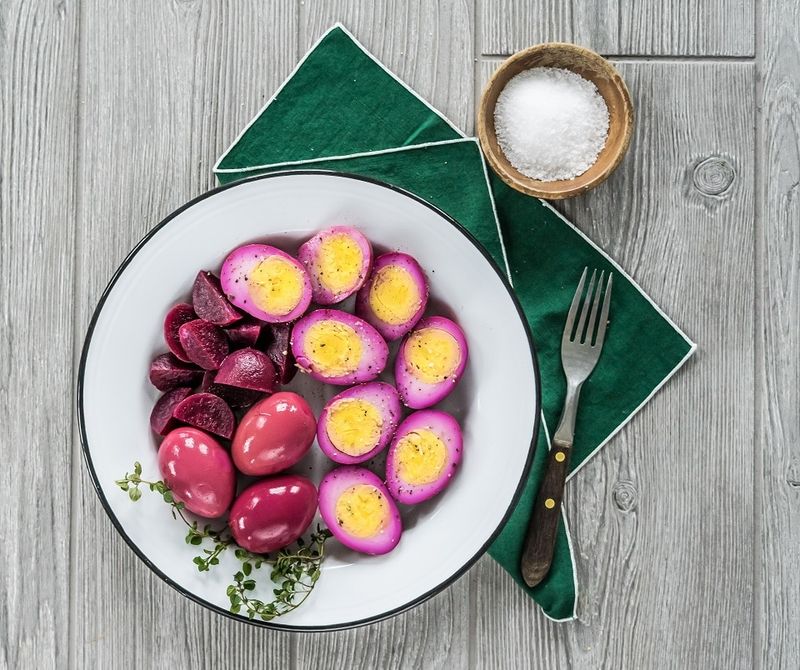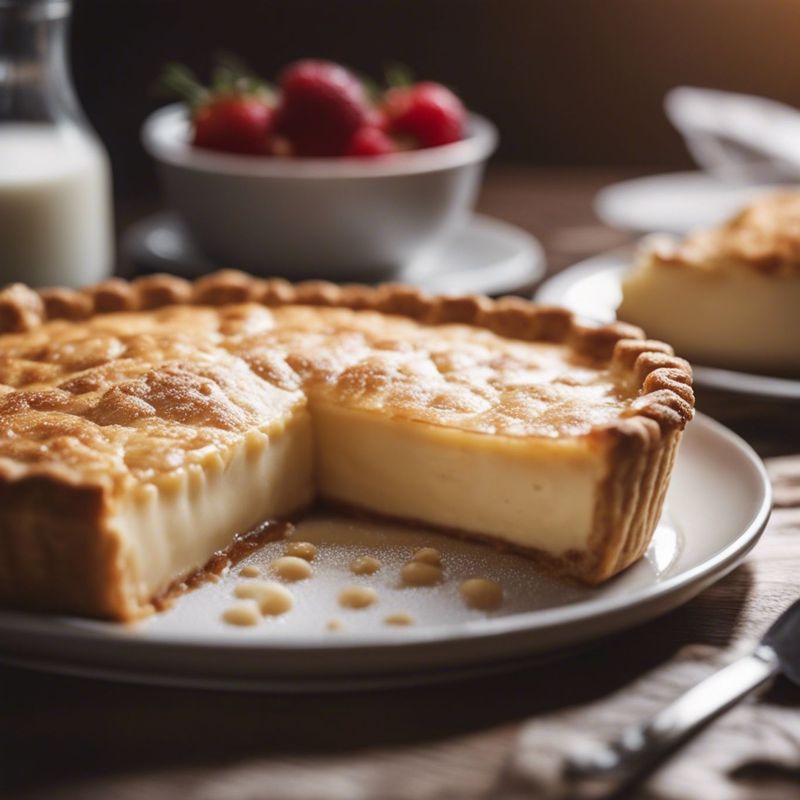Pennsylvania food doesn’t care about your diet, your doctor, or your Instagram followers. It was never about presentation. It was about stretching scraps into supper, about feeding coal miners, steel workers, farmers – people who burned through calories like gasoline. These weren’t dainty dishes. They were big, bold, often strange concoctions born from necessity and handed down through stubborn tradition. Every bite was memory, whether you liked it or not. They don’t show up in glossy food magazines, and maybe that’s the point. They were meant for kitchen tables, not critics. Here are twelve foods that defined childhood kitchens in Pennsylvania. Some sweet, some savory, all unapologetically real. Try them again, and you’ll find yourself dragged back home.
1. Lebanon Bologna
Lebanon bologna smells like smokehouses and old butcher shops – the kind that used to line small-town main streets before supermarkets sterilized everything. This is Pennsylvania’s answer to salami, but beefier, tangier, more unapologetically funky. Fermented, smoked, and hung until it deepens into something primal. Kids knew it as a sandwich meat, fried in a pan or slapped on Wonder Bread with mustard. Adults carved it thick, paired it with cheese and beer. It was survival food for long days in fields and forests. The taste is sharp, smoky, with a lingering sour note that divides a room. Love it or not, it tells you exactly where you are. Bite into Lebanon bologna, and you’re standing in Pennsylvania.
2. Hog Maw (Stuffed Pig’s Stomach)
Hog maw doesn’t mess around. It’s a pig’s stomach, scrubbed clean, packed with sausage, potatoes, onions, and cabbage, then roasted until everything inside fuses into a porky, starchy masterpiece. It’s not pretty. It’s not polite. But it fed families for generations, turning scraps into a feast. Outsiders recoil – “you eat that?” – but Pennsylvanians knew better. It wasn’t about luxury. It was about filling bellies with what you had. The smell of roasting hog maw would seep through a farmhouse like a promise. Crispy outside, tender inside, it was Sunday dinner for people who worked too hard to care about appearances. Call it rustic, call it brutal, call it what you want. For those who grew up with it, it was love.
3. Chow-Chow
Open a jar of chow-chow and you get Pennsylvania in one sniff – tangy vinegar, sharp mustard, sweet sugar, and a crunch of leftover vegetables pickled together in glorious chaos. Cabbage, beans, peppers, cauliflower – it didn’t matter what went in. Chow-chow was the Pennsylvania Dutch way of saving summer’s bounty for the lean months. It was survival disguised as relish. Bright, colorful, and always sitting on the table next to meat and potatoes, it cut through the heaviness of winter food with a sharp bite. This wasn’t something you bought – it was something your grandmother made in big batches and passed down in jars. Chow-chow wasn’t fancy, but it reminded you that nothing went to waste. Not in Pennsylvania.
4. Apple Butter
Apple butter isn’t butter at all – it’s hours of apples cooked down in big copper kettles over open flames, stirred until they collapse into a dark, sweet spread. In Pennsylvania, making apple butter was a community event. Families gathered, kettles bubbled, and the smell of cinnamon and cloves drifted across fields. Slather it on bread, pancakes, or straight from the spoon – it was autumn in a jar. Apple butter carried a deep caramelized sweetness, richer than jam, thicker than applesauce. It wasn’t about luxury – it was about making apples last through winter. Today you can still find it at farmer’s markets, but back then, it was a ritual, a memory, a warm reminder that hard work could taste like comfort.
5. Pot Pie (Pennsylvania Dutch Style)
Forget the golden-crusted pot pies you see in glossy cookbooks. Pennsylvania Dutch pot pie was a steaming pot of broth filled with chicken or ham, potatoes, and thick, square-cut noodles. No crust, no fuss – just comfort in a bowl. It was a poor man’s stew, stretched with whatever you had, but it stuck to your ribs like nothing else. Ladled into bowls after a day in the fields, it warmed cold bones and filled empty stomachs. The chewy noodles, sometimes called “slippery” by locals, were handmade and heavy, exactly the way they should be. It wasn’t pretty, but it was honest food – hot, hearty, and impossible to forget. One spoonful and you’re a kid again, sitting at Grandma’s table.
6. Shoofly Pie
Shoofly pie doesn’t whisper – it shouts. A sugar-soaked gut punch of molasses, brown sugar, and crumb topping baked into a crust. It’s sticky, unapologetic, and way too sweet by modern standards. But in coal country, sugar meant calories, and calories meant survival. Farmers ate it for breakfast with coffee, kids for dessert, and flies hovered around it on windowsills – hence the name. There’s no fruit, no elegance, no attempt at balance. It’s messy, dark, and intoxicating, like biting into liquid smoke sweetened with syrup. Some people hated it. Others couldn’t live without it. But if you grew up in Pennsylvania, you can taste it before the plate even hits the table. It’s not pie – it’s memory, baked into molasses.
7. Birch Beer
Birch beer is Pennsylvania’s soda of choice – root beer’s herbal, sharper cousin. Pour it over ice, and it fizzes with a medicinal bite that somehow tastes exactly like childhood. For generations, it was the drink at church picnics, school fairs, and roadside diners. Some remember it in red, others in brown, but the flavor always carried that distinct birch bark tang. It was earthy, clean, and different – something you couldn’t quite explain to outsiders. While Coke and Pepsi ruled the world, birch beer held its ground in Pennsylvania, fiercely local, fiercely nostalgic. Crack open a bottle today and you’re not just drinking soda – you’re drinking summers spent barefoot in the grass, fireflies blinking, the past alive in a glass.
8. Fastnachts
Before Lent came fasting, but in Pennsylvania, it also came with doughnuts – fastnachts. Dense, square, sometimes made with potatoes, fried in lard, and dusted with sugar, they were eaten on Shrove Tuesday to use up fat and flour before the season of deprivation. Forget Krispy Kreme – these were heavier, chewier, unapologetically filling. Bakeries sold them by the dozen, families fried them at home, and kids smeared powdered sugar across their faces before school. It wasn’t about indulgence – it was about ritual, about connection to a tradition that went back centuries. Fastnachts weren’t fancy, but they mattered. Bite into one now and you don’t just taste fried dough – you taste history, memory, and the stubborn joy of squeezing sweetness out of scarcity.
9. Scrapple
Scrapple is Pennsylvania Dutch cuisine in a nutshell – waste nothing, eat everything. Pork scraps and trimmings boiled down, mixed with cornmeal and spices, poured into a loaf, sliced, and fried until crispy outside and soft inside. Outsiders mock it, locals defend it fiercely. It’s not pretty, but it’s delicious if you grew up with it – savory, porky, salty, begging for a splash of ketchup or maple syrup. For many kids, scrapple was a Saturday morning breakfast, the smell sizzling from a cast-iron skillet. It was about making sure no part of the hog went to waste. For some, it’s an acquired taste. For Pennsylvanians, it’s just food. Real food. Eat it or don’t – but don’t insult it in front of Grandma.
10. Whoopie Pies
Soft chocolate cake, sugary cream filling, sandwiched together in a handheld sugar bomb – the whoopie pie is Pennsylvania’s greatest lunchbox legacy. Kids unwrapped them at school, parents packed them for road trips, and church bake sales sold them by the tray. Some say Maine invented them, but Pennsylvanians know better – they were Amish, plain and simple, born in Lancaster kitchens. Sweet, messy, and impossible not to love, they weren’t about finesse. They were about joy, about that one bite that glued chocolate and cream to your fingers. Every kid who grew up in Pennsylvania remembers them – whether homemade, bought from a roadside stand, or sneaked from the pantry late at night. They weren’t just dessert. They were childhood itself.
11. Red Beet Eggs
Crack open a jar of red beet eggs and you’re hit with vinegar, sugar, and earthiness all at once. Hard-boiled eggs soaked in beet juice until they turn shocking magenta. To outsiders, they look radioactive. To Pennsylvanians, they’re picnic staples. Tangy, sweet, and a little funky, they sat in glass jars on kitchen counters, glowing like jewels. You’d slice them into salads, serve them at Easter, or just eat them whole with a sprinkle of salt. The taste is unforgettable – sharp and sweet, with that earthy beet undertone. They weren’t just food. They were tradition, memory, color in a gray world. Love them or hate them, you never forgot them. And that’s the whole point.
12. Milk Pie
Milk pie is the humblest of pies. Flour, sugar, butter, and milk poured into a crust, baked until it turns into something greater than the sum of its parts. No fruit, no spice, no pretense. Born in the Depression, when money was tight and ingredients were scarcer still, it was dessert stripped to its bones. Sweet, creamy, comforting – the kind of thing you didn’t think much about as a kid, but remember vividly as an adult. This was food born from nothing, a reminder that necessity breeds invention. Milk pie isn’t flashy. It isn’t famous. But in Pennsylvania kitchens, it was proof that even in lean times, sweetness found a way.

